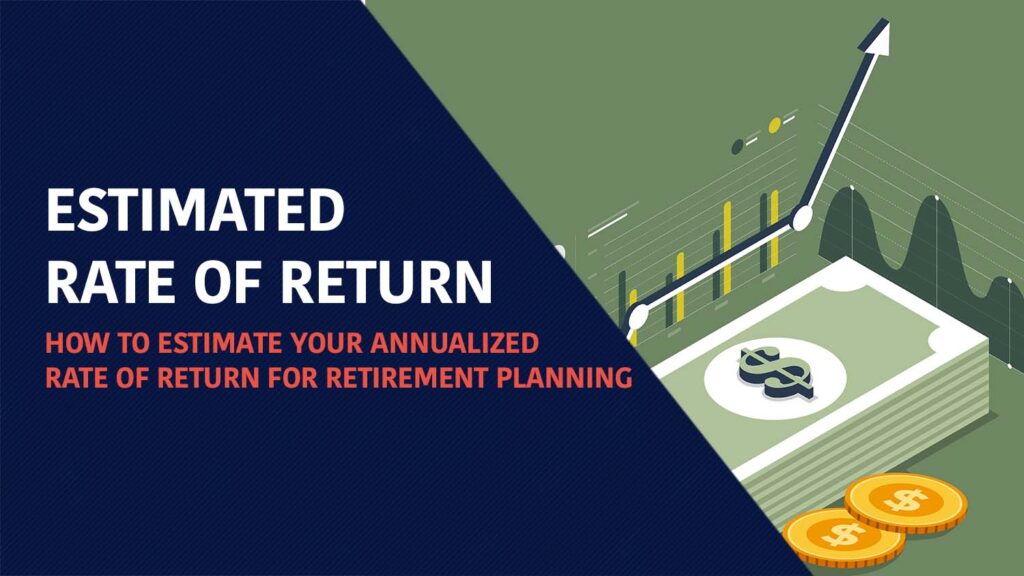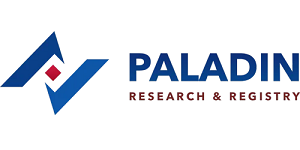
I use an estimated average annual investment return of 6.5% (before inflation) when planning for my own retirement. I came up with this estimate based upon my individual investment portfolio, which is roughly 70/30 stocks and bonds. Your number may differ.
Why does average annual rate of return matter?
When calculating how much money you need to save for retirement, you must estimate:
- How much you think you’ll spend.
- The average annual inflation rate.
- How much money you expect to get from Social Security.
- And what average annual rate of return you can expect from your investments.
It’s not easy, especially when retirement is decades away.
If you use an estimated rate of return that’s higher than reality, you risk not saving enough and running out of money in retirement. If your estimated rate of return is too conservative, you may end up with more money than you need when you’re older. Although that’s not necessarily a bad thing, it may put undue financial pressure on you now.
Using an investment calculator, you can see how even a 1% different in average annual return can make a big difference over several decades. For example:
- Over 30 years, a $100,000 investment that earns an average 7% return will be worth $200,000 more than if it earned an average return of 6%.
- If it earned an average return of 8%, it would be worth nearly $500,000 more than if it earned an average return of 6%.
What is ‘annual average return’?
The phrase ‘average annual return’ is ambiguous.
If you invested in a stock that went up 100% the first year and then came down 50% the next (a -50% annual return); one could argue the “average” annual return was 25%. But that makes no sense because the value of your investment is exactly where you started. Your net gain is $0.
This kind of “simple average” is sometimes used to describe the performance over time for very volatile investments. But, as you can see, it’s largely useless for planning purposes.
Therefore, when we talk about annual average investment return for planning purposes, we should be talking mean the annualized return, also known as the geometric mean or compound annual growth rate (CAGR).
Compound annual growth rate (CAGR)
Compound annual growth rate (CAGR) is the hypothetical fixed interest rate that would result in compound interest turning a given present value into a given future value over a period of time.
You can calculate CAGR using the following formula, where PV = present value, FV = future value and Y = the number of years.
CAGR = (FV / PV)1 / Y - 1CAGR will take into account any dividends that are reinvested over the time period. It’s important not to underestimate the importance of reinvested dividends when looking at historical investment returns. Your expected returns will be lower whenever you withdraw dividends rather than reinvest them.
Historical stock market returns
Since it’s impossible to predict future stock market returns, the best we can do is to look at the market’s past performance.
Average annual returns are varied when you look at 10- and even 20-year periods, especially when accounting for inflation.
But when you zoom out to look at 30-year periods, returns stabilize. (Just another reason why time is the most important factor when investing.)
S&P 500 historical average annual returns
10-year periods
| 10-year period | Annualized return (CAGR) | Inflation-adjusted return |
| 1974-1983 | 10.62% | 2.27% |
| 1984-1993 | 15.07% | 10.95% |
| 1994-2003 | 11.11% | 8.53% |
| 2004-2013 | 7.36% | 4.88% |
| 2014-2023 | 12.07% | 9.03% |
20-year periods
| 20-year period | Annualized return (CAGR) | Inflation-adjusted return |
| 1964-1983 | 8.26% | 2.02% |
| 1984-2003 | 13.07% | 9.74% |
| 2004-2023 | 9.69% | 6.93% |
30-year periods
| 30-year period | Annualized return (CAGR) | Inflation-adjusted return |
| 1933-1963 | 13.41% | 10.31% |
| 1963-1993 | 10.87% | 5.40% |
| 1993-2023 | 10.16% | 7.46% |
I don’t recommend anyone invest solely in the S&P 500. But if you did, it would be reasonable — based upon past performance — to use a 10% expected average annual return, before inflation.
In reality, you should have a more diversified portfolio. Although the S&P 500 — an index of 500 of the largest U.S. public companies — is probably the most common yardstick for the stock market as a whole, it’s not the whole story.
60/40 portfolio historical average annual returns
If we wanted a more typical example of how many people actually invest for retirement, we should look at a portfolio that’s 60% diversified stocks (large and small, U.S. and foreign) and 40% bonds.
The 60/40 portfolio is so popular because it balances the high risk and higher rewards of stock investing with lower-risk but lower-return bonds.
As of April 30, 2024, the 30-year average annual return of a 60/40 portfolio stands at 8.28%, or 5.42% adjusted for inflation (source).
Recently, the 60/40 portfolio has fallen out of favor somewhat because bonds have performed so badly in the current high-interest-rate environment. But the actual picture isn’t as awful as some critics say: Over the 10-year period ending in 2022, the 60/40 portfolio returned an average of 6.1%. In the 9 years prior to 2022, it returned 8.9%.
Will future stock market returns be worse?
Every so often, I come across financial experts warning that the decades of reliable stock market returns are over. Personally, I don’t buy it.
Someday, our global economy may hit its limit and be unable to grow much bigger. We are, after all, running out of natural resources and population growth is slowing. Most likely, these are concerns for our grandchildren.
That said, the future will always be uncertain. There is no guarantee that, over the next 30 years, the stock market will match its past performance.
This is where it pays to be slightly conservative when estimating future average investment returns.
Dave Ramsey is infamous for using a 12% expected average return when explaining the importance of investing. I think that’s not just a poor assumption but a dangerous one, as do most smart investors I know.
Why I use a 6.5% expected average annual return
I chose to use a 6.5% expected average annual return because it’s on the low end of recent 30-year returns for a 60/40 portfolio.
I hope and expect my actual returns may be higher, but I’d much rather be conservative in my estimate and be pleasantly surprised than get to retirement and realize I can’t afford the lifestyle I thought I could.
Still, some would say I’m not being conservative enough. I’ve seen people use estimated average annual returns, before inflation, as low as 5%.
What average annual return should you use?
The biggest individual factor in the estimated rate of return you’ll use is your risk tolerance and investment strategy.
For example:
- If you’re an aggressive investor and plan to stay invested in 90% to 100% stocks, a 10% estimated rate of return makes sense.
- If you’re an average investor with a 60/40 portfolio (or similar), I recommend an estimated return between 6% and 8%.
- If you’re a very conservative investor who plans to move to more than 40% bonds and/or cash, an estimated rate of return of 4% or 5% is appropriate.
What about inflation?
Inflation is the other wild card in retirement planning.
Historically, the U.S. inflation rate fluctuates between about 1.5% and 4% per year. So if you got a 10% return on your investments in a year that saw 3% inflation, your inflation-adjusted return is more like 7% (that’s an oversimplification, but you get the idea).
Remember, inflation is the whole reason you can’t just stash your savings in a bank account and expect to grow wealthy. If inflation is 3% and you’re only earning 2%, you’re losing money!
Personally, I like to look at inflation separately from investment returns. But doing so requires looking at what your inflation-adjusted spending needs will be in the future. Let’s look at the difference:
Returns not adjusted for inflation
If you invest $100,000 over 30 years and earn 9.5% rate of return, your money will be worth about $1.7 million in today’s dollars. If you’re planning to spend about $65,000 of today’s dollars in retirement, you might think that figure looks pretty good. $65,000 is 3.8% of $1.7 million, and that’s a comfortable withdrawal rate assuming you retire at or near 65.
What this forgets to take into account is how much money you’ll need to spend after adjusting for inflation. Assuming a 3% average annual inflation rate, you’ll need $157,000 in 30 years to afford the same lifestyle as $65,000 buys you today. Withdrawing $157,000 from $1.7 million is a 9.2% withdrawal rate, putting your retirement on shaky ground.
Returns adjusted for inflation
If we used inflation-adjusted returns instead, we find that $100,000 invested earning an annual return, after inflation, of 6.5% will yield $700,000 after 30 years.
Either way, the result is the same: You’ll need to withdraw 9.2% of your principal in order to cover $65,000 of expenses, in today’s dollars. So, in this case, you might need to adjust either how much you’re saving or how much you plan to spend in retirement.
Where to get help
Anticipating your rate of return is one piece of a much larger retirement puzzle.
If you’re still not sure, the best way to give yourself a head start on your retirement planning is to work with a certified financial planner. If you need help tracking one down, Paladin is a great resource. Simply input information about your goals and Paladin Registry will match you with a pre-screened financial fiduciary who can help you reach your savings goals.
Paladin Registry is a free directory of financial planners and registered investment advisors (RIAs). The registry has the highest standards for its advisors, and it works with your requirements to find the perfect match.
- Free to use
- Narrowed and vetted pool
- No obligation to move forward
- Requires at least $100,000 in investable assets

